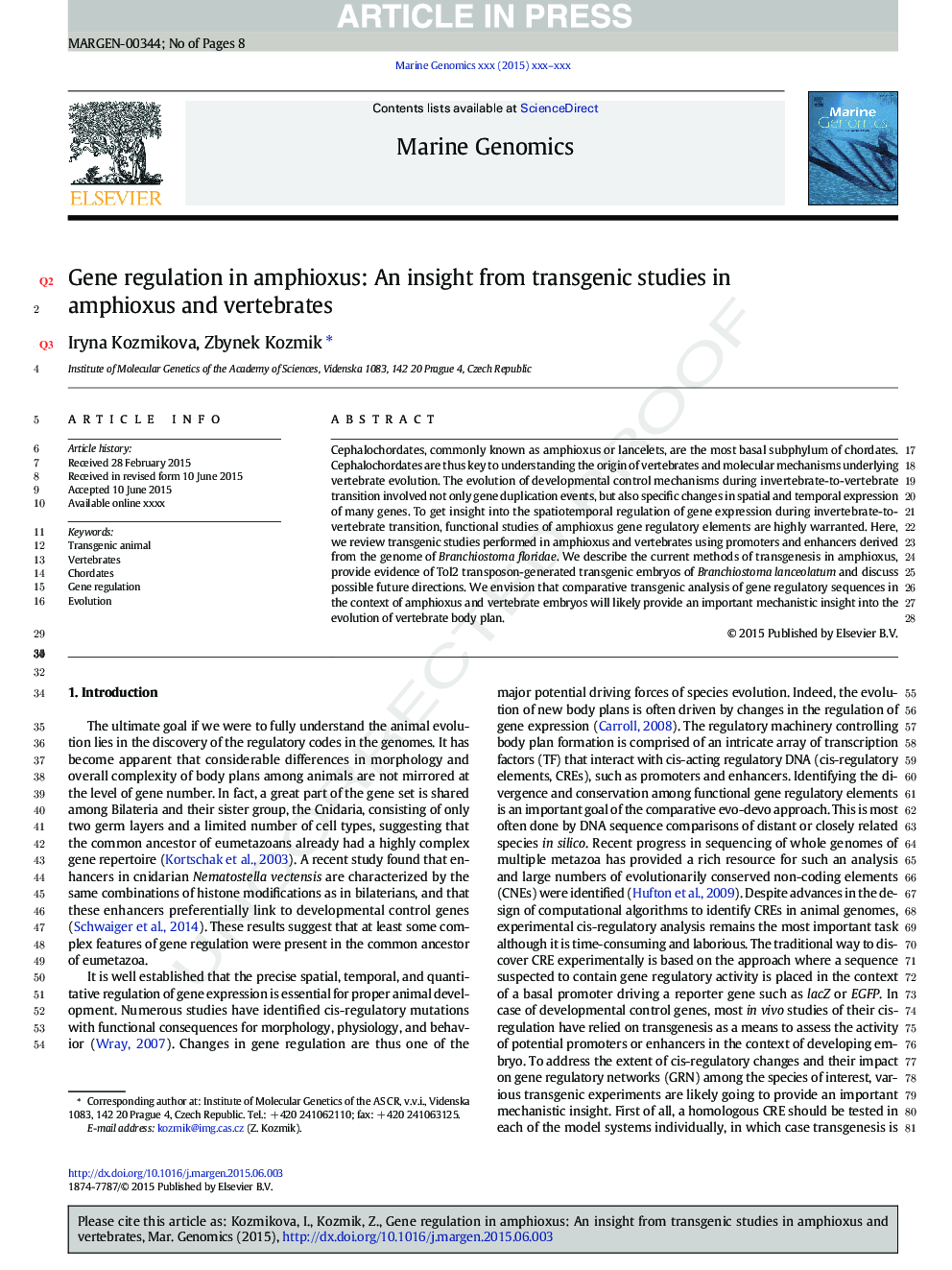| Article ID | Journal | Published Year | Pages | File Type |
|---|---|---|---|---|
| 10877939 | Marine Genomics | 2015 | 8 Pages |
Abstract
Cephalochordates, commonly known as amphioxus or lancelets, are the most basal subphylum of chordates. Cephalochordates are thus key to understanding the origin of vertebrates and molecular mechanisms underlying vertebrate evolution. The evolution of developmental control mechanisms during invertebrate-to-vertebrate transition involved not only gene duplication events, but also specific changes in spatial and temporal expression of many genes. To get insight into the spatiotemporal regulation of gene expression during invertebrate-to-vertebrate transition, functional studies of amphioxus gene regulatory elements are highly warranted. Here, we review transgenic studies performed in amphioxus and vertebrates using promoters and enhancers derived from the genome of Branchiostoma floridae. We describe the current methods of transgenesis in amphioxus, provide evidence of Tol2 transposon-generated transgenic embryos of Branchiostoma lanceolatum and discuss possible future directions. We envision that comparative transgenic analysis of gene regulatory sequences in the context of amphioxus and vertebrate embryos will likely provide an important mechanistic insight into the evolution of vertebrate body plan.
Related Topics
Physical Sciences and Engineering
Earth and Planetary Sciences
Earth and Planetary Sciences (General)
Authors
Iryna Kozmikova, Zbynek Kozmik,
